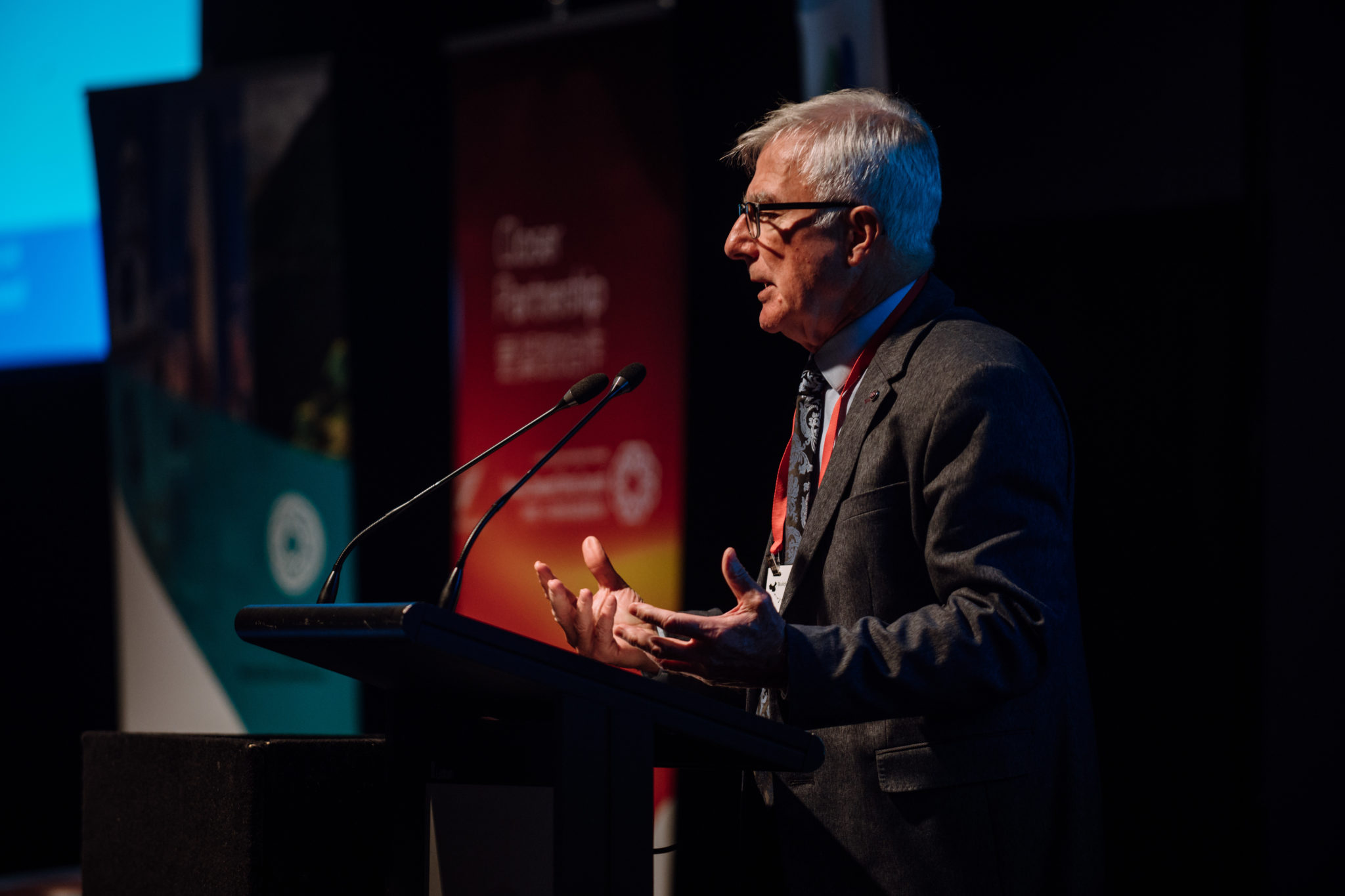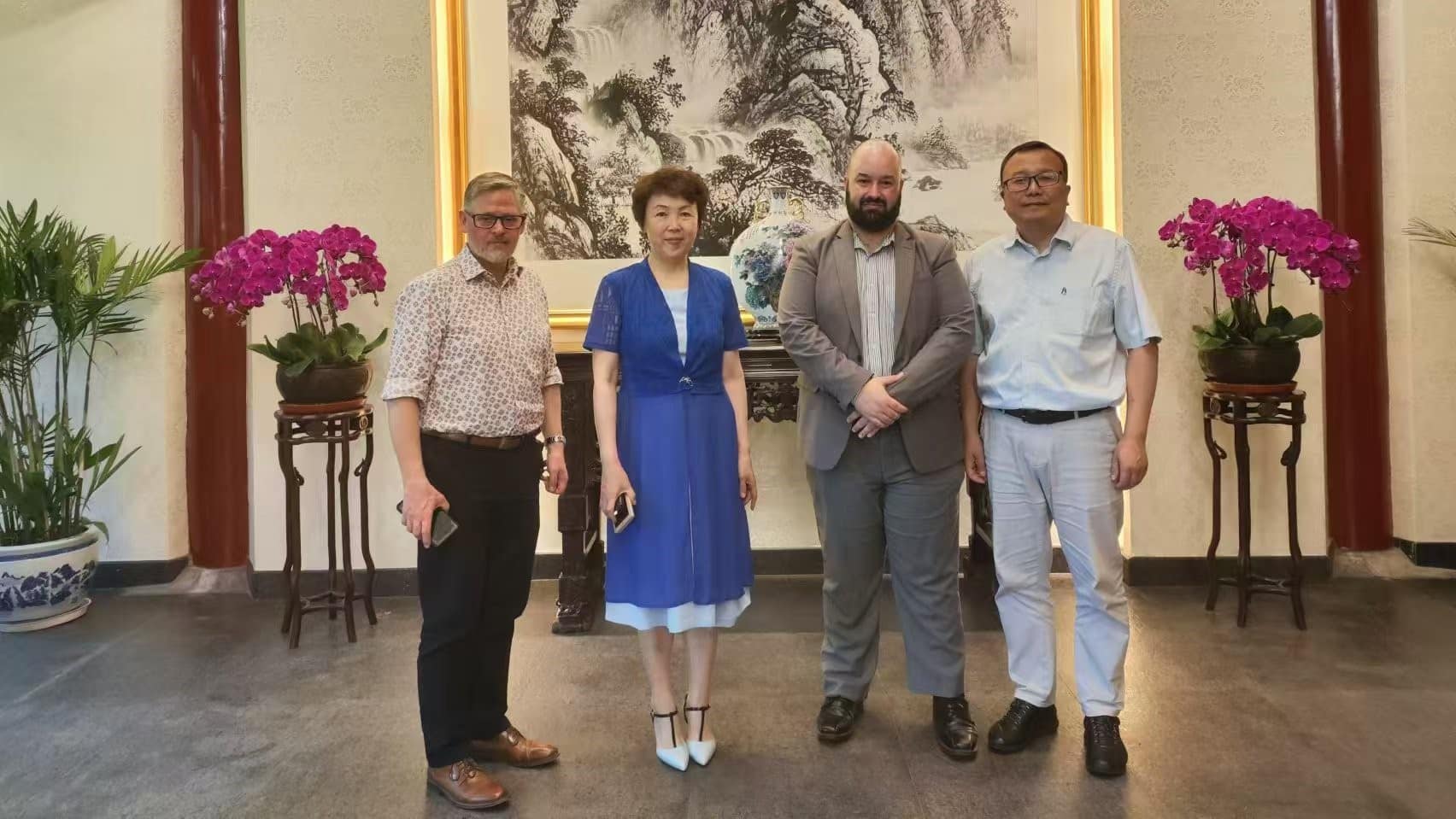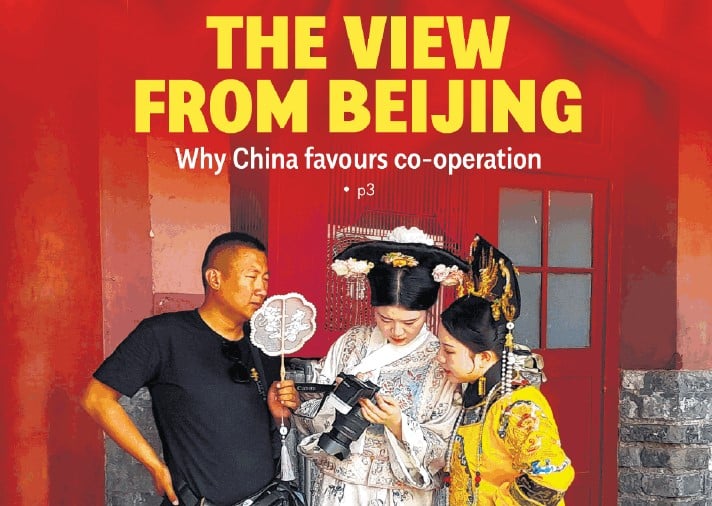Hon Tim Groser: Remarks to the Building the Southern Link Conference
Chairman
I very much appreciate the initiative of the NZ China Council and the other stakeholders from South America and China who have brought us together to build support for, and understanding of, this intriguing idea of ‘building the Southern Link’. I have been asked to frame it in a broader strategic way, with a particular focus on the lessons we can learn from successes in our economic relationship with China over more than a decade.
This is not just to make an academic point. We knew before we gathered here that to build on the vision of ‘The Southern Link’, we will need not only some important companies to make the commercial commitments to such a link, but also a set of supportive decisions made by several Governments over very practical issues such as transit visas, landing rights, world class trade facilitation reflecting e-commerce realities, passenger facilitation. Without strong political support from China, NZ (and any participating South American Governments) building ‘The Southern Link’ into a major route between East Asia and South America simply won’t happen – hence the strong focus in my remarks on broader political considerations.
Turbo-Charging The Southern Link
In a real sense, ‘The Southern Link’ already exists – people travelling from East Asia to South America already use those flight connections that exist and transit via Auckland or Christchurch. But our objective here is to turbo-charge it.
To do this, some of the necessary policies are in place, others are not yet reality – other speakers will be addressing these more concrete gaps that can be identified. But above all that, we have to recognise one constant in all politics, domestic and international: there is huge competition for the attention of political decision makers. The bigger and more important the country is, the more difficult it is to get the attention of policy makers. To move policy consideration up the political food chain for positive decisions, it will be necessary to frame this idea in a broader context that makes sense in terms of the strategic priorities of the key players, particularly China.
And there are two central ideas I wish to focus on here. First, at least in principle, the idea of the Southern Link would seem to fit perfectly into President Xi’s signature foreign policy idea – the Belt and Road Initiative. Second, to make things happen, we need to be decisive and develop momentum. As an aside, after all the many years I have been involved in economic and political diplomacy, I have come to learn how vital momentum is. And that is what we are trying to build here in Auckland today – momentum.
NZ/China Economic Relations – Lessons from the Past
Stepping back from this particular issue, many of those New Zealanders who have been practitioners will be familiar with the doctrine – ‘NZ is either first cab off the rank, or last’. It was first explicitly formulated in 1993 as central to our Trade Policy Strategy – which has a long history of bipartisan support on its core principles. It has been particularly important to our economic diplomacy with China in the last two decades when China formally came back into the rules-based international trading system and resumed its seat in the WTO.
Simply stated, the doctrine holds that in dealing with great powers and their new, large strategic opportunities, first mover advantage is extremely important for a small country. The value NZ can add is boldness and decisiveness, not power. It is a close philosophical cousin to the famous observation of Sir Ernest Rutherford, the New Zealander who was the first person to split the atom: “We haven’t the money, so we New Zealanders have got to think.”
‘First mover advantage’ is a well-known business model; in the world of diplomacy, it is a rare thing indeed. Moving first and fast is the antithesis of the default option of most Foreign Ministries around the world who search for what is called in professional circles, ‘good company’, before getting on board any new idea. That is, the conventional foreign policy mind will want to ensure they avoid all controversy by joining queues, not establishing them. Happily, I would say that our Foreign and Trade Ministry has been a bit of an outlier here, being prepared to move nimbly to capture opportunities in the economic space.
Maybe, if you are a G20 economy with real economic or political heft, this makes sense. But for NZ in the field of economic diplomacy? I don’t think so. When a new opportunity arises, if we wait until it attains the approval stamp of ‘conventional wisdom’ and our traditional friends and like-minded countries form a political queue behind it, we are likely to get shunted near the end of the queue, behind palpably more important countries than NZ. As someone who has been professionally involved in all serious NZ attempts to get an FTA with the United States since 1984 when I was working directly to then Prime Minister David Lange on this dossier – exactly a quarter of a century ago – believe me, I have reason to say this.
It is, one could say, the policy equivalent of the rather more dramatic phrase – ‘the quick and the dead’. It has been the guiding principle behind the highly successful development of the NZ/China relationship, as evidenced by the Chinese characterisation of our relationship – the ‘Four Firsts’, the list of course includes being China’s first developed country FTA, signed by the former Prime Minister, the Rt Hon Helen Clark.
Personally, I have a minor difficulty with the phrase ‘The Four Firsts’ – but only because I think it should be ‘Six Firsts’. In addition to the well-known ‘four firsts’, NZ was also the first country to sign a comprehensive framework for free trade with the separate Chinese customs territory of Chinese Taipei, an obviously sensitive initiative – but only after the most careful consultation undertaken with the authorities in Beijing. This was building on the previous Government’s FTA during the period I was Trade Minister and was negotiated in a way that was completely consistent with our One China Policy. It involved, of course, a high degree of trust – a judgement that proved thoroughly warranted.
Second, to add to the list of the ‘Four Firsts’, we were the first self-designated developed country to throw our support behind the Chinese proposal for the Asian Infrastructure Investment Bank (the AIIB), well before other so-called ‘Western countries’ shuffled across the line on that issue – as most of them eventually (and somewhat reluctantly) – did in time. If we had waited until they all came on board and then we had moved, nobody would have noticed (or frankly cared) that NZ had endorsed the AIIB.
Our former Secretary to the Treasury, John Whitehead, whom the previous NZ Government appointed to represent NZ in the AIIB formative discussions, made a significant contribution to the drafting of the governance structures of this important Chinese initiative – precisely because NZ represented a broader set of values and principles of governance shared by far larger, but absent, so called ‘western’ countries at the outset of this negotiation.
This is not some private theory of mine – it was explicitly recognised at the time by the Chinese AIIB negotiators in their discussions with Mr Whitehead, and remained their approach until such time as the UK, France Germany and others shifted their positions and arrived at the AIIB table.
These values and principles transcend partisan politics in New Zealand because they reflect deeply based New Zealand values that do not change with the ebb and flow of the electoral cycle. I am confident that the values and principles that guided our participation in the AIIB negotiations will be exactly the same values and principles that will guide our participation in the Belt and Road Initiative. And these principles and values sit alongside a pattern of independent thinking.
BRI – A Unifying Idea?
These lessons from our past economic relationship are obvious and will apply here. It is all about seizing a big strategic idea – the Belt and Road Initiative – sponsored by a much larger country, in this case, the second Super Power, China. We would be selecting pieces of the larger BRI fabric that we can work with and are consistent with our values and interests.
The Belt and Road Initiative is not without controversy and it is evolving. I think of BRI as a broad political umbrella that provides cover for a wide range of potential activities. I would like to commend the report written by PWC for the NZ China Council – ‘Belt and Road Initiative: A Strategic Pathway’. After three years in Washington, I have learned that the phrase ‘hot take-aways’ does not necessarily refer to Tacos and Big Macs, but is used by breathless talking heads on podcasts and Bloomberg TV to describe key findings of the think-tanks that populate DC central. Here are my ‘hot takeaways’ from this excellent report.
- First, NZ inc – the Government, companies, supportive institutions such as the Council or the think-tank I used to head up 20 years ago, the Asia/NZ Foundation – need to assess the vast menu of BRI options in terms of a set of sound criteria the PWC report puts forward. I regard these criteria as codified common sense – for example, are BRI ideas or projects aligned to our comparative advantage? How might we assess reputational risk? That will be important to New Zealanders and any NZ Government. What is the potential for traction with China? Read the report for the full list of criteria and the accompanying more granular analysis.
- Second, we need to be conscious of what the Report calls ‘preference erosion’. I hesitate in a multi-cultural environment like this to use cricket analogies (unless I am in Mombai or New Delhi of course), but ‘preference erosion’ is a rather more pointy-headed way of saying ‘you are only as good as your last innings’. Absolutely. Yes, we have had a remarkable record of developing our economic relationship with China through innovation and calculated risk-taking, but that was yesterday, not today. BRI changes the game. We will need to frame our involvement with China in the economic sphere within the BRI framework, or the traffic will pass us by.
We are all aware that the Belt and Road Initiative is controversial, though it would be misleading to exaggerate this: over 100 countries, and several major international institutions sent representatives to the recent BRI meeting in Beijing, including our own Government, led by the Minister of Trade, the Hon David Parker.
The real controversy arises because of broader geopolitical shifts, including most obviously the sharply different tone in US/China relations – and its backwash into the international trading system in particular. Along with many analysts, until very recently I had thought we were shifting towards some broad shared sense of responsibility between Beijing and Washington for the largest global strategic issues such as trade and climate change – a shift from a G7 to a G2 world, in the parlance of foreign policy thinkers. The exemplar of that was of course the bilateral climate change understanding agreed between the US and China on the eve of the APEC Leaders Meeting in Beijng in 2015. As someone who was deeply involved at the time in the international climate change negotiations, I can tell you that without that convergence between the US and China, there would have been no Comprehensive Paris Agreement on Climate Change.
But it is a sharply different world today and there is no crystal ball available to us to predict precisely where this is going to land. To navigate through these disturbed waters, we will need to use specific criteria for assessing BRI proposals such as proposed in the PWC/Council report framed against the broader political reality that all key NZ political parties have formally endorsed the principle of an Independent Foreign Policy. Allow me to explore this a little more deeply.
NZ and an Independent Foreign Policy
NZ is an independent sovereign country but it took us more than a little while to work out the implications of this. We have to make our own way in this world – or as I used to say frequently when I was Trade Minister, I have never met even an Australian, let alone anyone from countries far less committed to NZ than our closest friend Australia, who thought they owed NZ a living.
The term ‘independent foreign policy’ has myriad meanings – meanings which have changed over time. It does not mean, at least in my view, that we don’t ever join alliances, both formal and informal, for the simple reason that some of those alliances may make perfect sense in terms of our own assessment of our long-term interests. Again with Australia in mind, consider our extraordinary defence relationship over the last century, where frequently NZ troops even operate under unified Australian command.
It simply means that we assess major foreign policy questions on their merits against the background of an independent assessment of NZ interests and values. And then we act – I would hope decisively. If that leads us to embrace initiatives that our close partners in quite different strategic contexts are not part of – so be it. To use former Prime Minister Sir John Key’s favourite phrase – ‘it is what it is’. The days are past when it was appropriate for a New Zealand Prime Minister to say ‘where Britain goes, we go’.
Many commentators and possibly others will be deeply uncomfortable with this, wanting one simple ‘alignment’ to dictate all NZ external policy choices – the antithesis of an independent foreign policy. I would not argue that it is a choice we should make ‘issue by issue’ – that would lead to incoherence; I would argue that it is more rational to make that choice of partners strategic context by strategic context.
Such an assessment by the Government of the day will be different depending on the strategic context. Take the field of intelligence. NZ is the smallest member of the extraordinary ‘Five Eyes’ Intelligence system that developed out of Anglosphere cooperation in the second World War. This is vital to NZ’s security across all fields from terrorism, people smuggling, narcotics as well as traditional security concerns. In that context, at least in my view, it is entirely appropriate to weight extremely heavily the concerns of our other traditional intelligence partners. But in another strategic context – international trade and economic architecture – I would argue that an independent assessment of NZ long term interests may merit a very different decision on the part of the NZ authorities of the day. Yes, there will be some blurred lines here but that is the very purpose of elected Governments – to decide where to draw the line.
Implications for ‘The Southern Link’
Traditionally, New Zealanders have viewed our extreme geographic isolation from the major centres of Western economic power as a significant disadvantage. Indeed, if you look at Planet Earth on the basis of a conventional 20th Century two-dimensional global map, no wonder we are called ‘the last stop on the planet after Australia’.
But the great divergence of the concentration of global wealth from the concentration of global population is rapidly changing since it began around 1750 with the First Industrial Revolution. With the extraordinary rise of the emerging economies, led by China, a global phenomenon that has a long way to run yet, this great divergence has been placed on fast rewind. Once again, the centre of economic wealth is moving progressively back in the direction of the concentration of people.
The fact that we are here today to promote Auckland and Christchurch as highly convenient ports to connect the roughly half a billion people of South America to the roughly two billion people of East Asia would have seemed bizarre until the rise of the emerging economies over the past 40 years. And please note that while China is understandably the centrepiece of our attention, the BRI initiative is also about improving connectivity throughout the Asia Pacific more generally. Auckland airport has excellent flights to and from Japan, Korea and many South East Asian countries where the same logic applies. That, as far as I understand the BRI Initiative, is totally consistent with Chinese thinking – it is a region-wide view of connectivity.
The revolution in logistics also changes everything. The Chairman of FedEx – aided no doubt by a large team of researchers at this giant international logistics company – has calculated that by 2015 (or roughly half a century on from the introduction of containerisation) the cost of sea freight had fallen to 1/500th of the cost per pound or kilogram of what it had been in 1966.
There are similar dramatic sets of data around cost reduction of air freight costs. One of the most extraordinary conversations I had as Trade Minister some years ago was with a company exporting liquid milk by air to Shanghai. Think about it – milk is 90% water. And you can make money airfreighting what is physically essentially water to China? Quite extraordinary.
But the cost reductions in sea and air freight are nothing compared with the cost reductions and efficiency gains in data.
It is time to throw away the phrase ‘the tyranny of distance’. The revolutionary developments in logistics mean physical distance matters far less to the movement of goods and services. But there is one vital exception and we all know what that is – the movement of people. We still need to transport people vast distances and that is why we are here at this conference: to try to develop faster and more efficient ways to transport people from certain parts of South America to China (and East Asia more generally).
When it comes to people to people contact, Skype, Whats App. We Chat and other similar technology platforms augment human interaction. But until the species we all belong to, homo sapiens, is replaced at the top of the Darwinian food chain by artificial intelligence druids, holograms or whatever – something I know we all can’t wait to see – we are going to need face-to-face contact and direct human interaction.
And that includes the people of South America and East Asia. It would indeed be a wonderful idea if NZ, so long considered the last stop on the Planet, could become the first stop on the planet for the inevitable massive growth in people to people movement and air freight between Asia and large parts of South America.
I believe that the combination of the BRI Initiative, which is all about connectivity, the geographical realities that govern the physical transport of people between large parts of South America and East Asia that make Auckland and Christchurch ideal transit stops, and the history of innovation and boldness in the development of NZ/China economic relations could come together in a highly productive way. Let us try and make it happen.












 MENU
MENU
